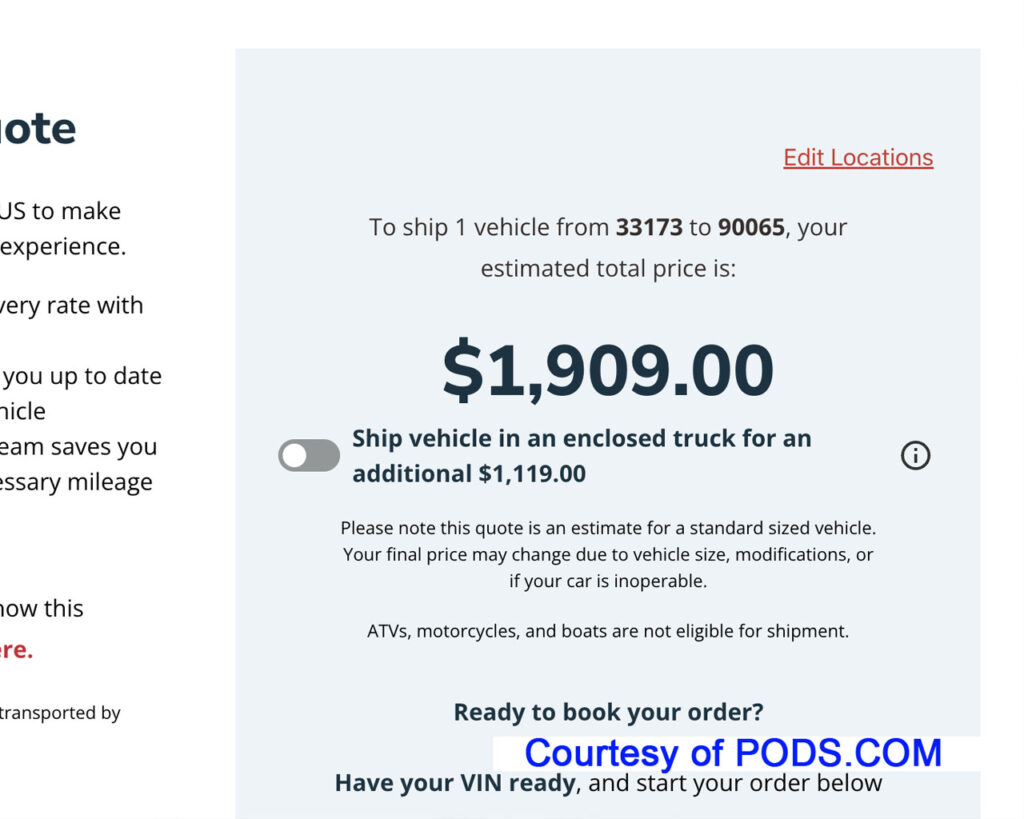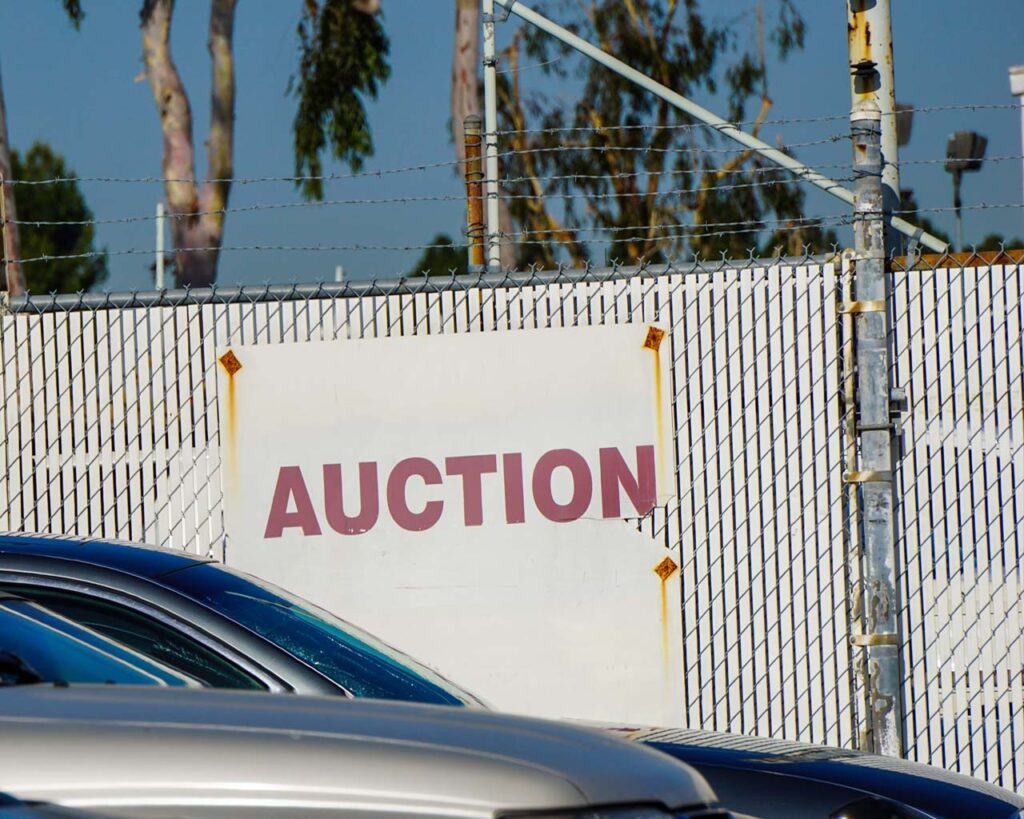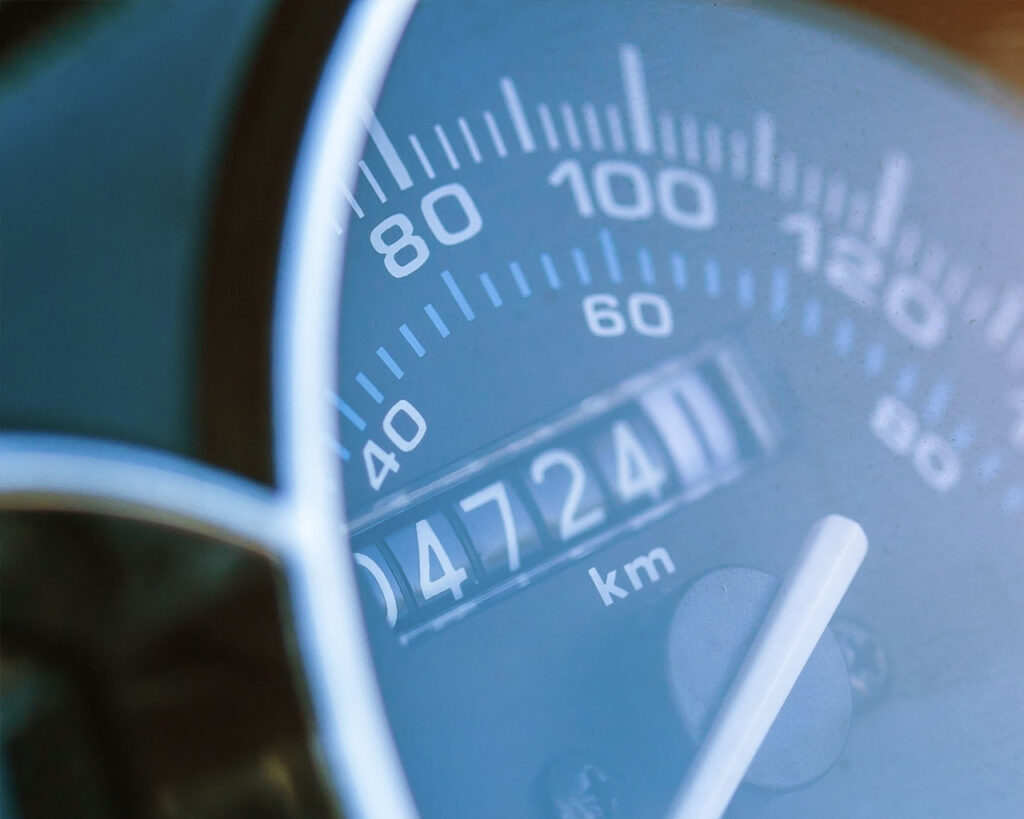The Basics: Can I Tow a Car With Another Car? The answer is yes you can. A car car tow another car. However, towing a car with another car requires a good amount of planning and an understanding. Adherence...
The Basics: Can I Tow a Car With Another Car?
The answer is yes you can. A car car tow another car. However, towing a car with another car requires a good amount of planning and an understanding. Adherence to the safety rules involved as well obeying laws that apply to the methods of towing a car with another are key to a successful DIY tow. The methods used car a tow strap, tow dolly, tow bar, and trailer.
Is Towing a Car with Another Car Illegal?
No, there isn't a law that says you can't tow one car with another car. But, there are situations where doing so in a way that can cause harm to you and other drivers will then make it illegal. Like not following properly safety requirements or not using required equipment.
If you knowingly and grossly exceed the towing capacity of the vehicle you are using to pull, it can be illegal. As a rule of thumb, the tow vehicle (the one pulling the other car) must be bigger and heavier than the car or car and trailer it is pulling. Also, it will be a common problem to find that the vehicle and the equipment used will be heavier than a passenger car.
Before We Get Into The How To Tow Another Car - Let's Talk Safety
It's important to understand and follow legal and safety guidelines.
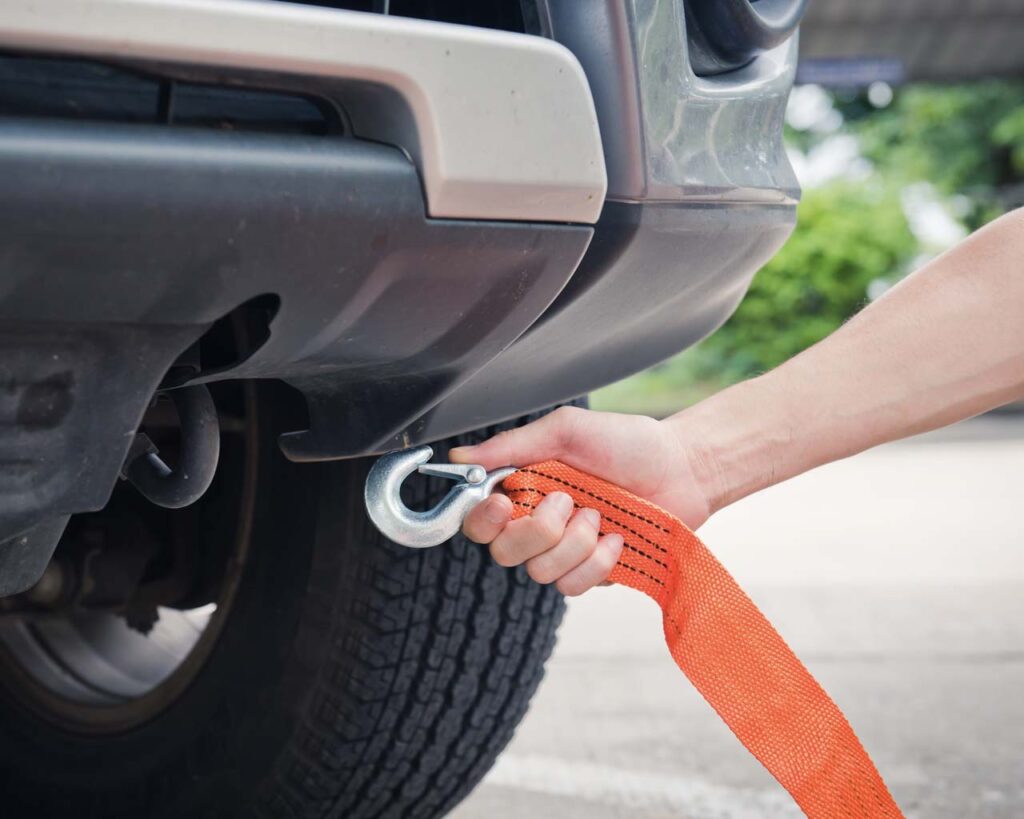
About Using a Tow Rope, Chain, or Tow Straps
Keep in mind, this is the riskiest way to tow a car with yours. There are times like when pulling a vehicle that is stuck or out of a ditch, where it's presumed the move will only be a few feet and can be the best method. For on the road however, it can be a different story.
When stopping, use extreme caution since the towed vehicle will not be able to stop. Some figure putting your buddy in the driver's seat of the car you are pulling solves this problem. However, it not only dangerous but is illegal.
If you are only able to use this method, to prevent the vehicle you are pulling from slamming into yours, it's important to maintain a speed not exceeding 20 mph with this kind of flat tow. The slower the better. It should be for a very short distance. Also consider slightly setting the parking brake pedal to create some resistance. This however will likely not work downhill.
In most states, the maximum allowable tow rope length is 4.5 meters. If the tow rope is longer than 1.5 meters, a colored cloth or high-vis sign should be attached for visibility to other drivers??. Laws pertaining how to tow a vehicle by tow rope, chain, or tow straps vary by state.
Always Use an Appropriate Tow Car
Choose a tow car that is heavier than the one being towed. Your car’s manual can provide guidance on the maximum tow weight?. You also need a vehicle with a receiver for a tow hitch.
Adhere to Lighting Requirements
Both cars must have their lights on during dark or murky weather conditions??. If using a trailer, hook up trailer signal lights on the towed vehicle as required in your state.
Use Proper Ignition and Gear Positioning
The towed car must have its ignition switched on and be in neutral. Make sure the key is also in a position to unlock the steering wheel. This will allow the wheels to turn freely??. If towing an electric car, there will be differences on how to do this.
Practice Driving Maneuvers
Never done this? Then it's advisable to practice towing maneuvers with the towed car in a safe, open space, such as a parking lot, to get used to the differences in handling and braking power needed to stop and go.

How to Tow a Car with a Dolly
The easiest and most popular DIY car towing method is a Dolly. By having tow vehicle use a tow dolly it is not only much safer but more convenient. This method does also involve a series of steps and precautions so you won't find yourself in costly or harmful predicament. Following all the proper steps can make sure the towed vehicle is sitting safe on the dolly.
Preparing Your Car for Dolly Towing
Secure the Car on the Dolly
Load your car onto the dolly using ramps and secure it with straps and hooks. Be sure that the straps are tight enough to prevent the vehicle from moving or shifting during transport. The car should be centered on the dolly??.
Check Tire Pressure and Brakes
This can be easily missed as it can be an after thought. But always check the tires are properly inflated and in good condition. Check the brake fluid level and the functionality of the brakes?? too.
Use Additional Safety Measures
Employ safety measures like safety belts and chains. Safety chains provide extra security and prevent the dolly from separating from the towing car in an accident??.
Attaching the Dolly to the Towing Vehicle
Check the Weight Capacity
Before getting started, verify that the combined weight of your car and the dolly does not exceed the towing vehicle's (the one doing the pulling) maximum weight capacity??.
Check the Hitch
Just because the hitch is there, does not mean it's secure! Make sure that the hitch is in good condition and can support the weight of the dolly and your car??.
Connect the Dolly
Sounds simple but be smart. Line up the hitch ball with the coupler on the dolly and be sure it's securely attached??. In most cases one or two people can lift the dolly into place on the hitch. For heavier ones, have a buddy guide you in.
Double-Check Your Connection
Make sure everything is secure and won’t come loose during transport??. Clip on the safely chain. Make sure your trailer lights are securely plugged in.
Test Lights and Brakes
Make sure your trailer lights are securely plugged in. Double check that the dolly’s brake lights and blinkers are functioning correctly when car’s brakes are pressed and signaling for a turn?.
Using the Tow Dolly
Attaching Front Wheels/Two Wheels
Attach the towed vehicle's front wheels or two wheels onto the dolly using a loading ramp and tire straps??.
Transmission and Parking Brake:
Check the towed vehicle’s transmission is in neutral and its parking brake is off. For rear-wheel-driven vehicles, disconnect the drive shaft or use a dolly with a u-joint??.
Driving Carefully
Drive slowly and carefully to avoid accidents or damage to the vehicles. Make sure the differential housing of the towed vehicle is not damaged by the towing process??.
Unloading at the Destination
Use the unloading ramps to safely remove the towed vehicle from the dolly. Disconnect all equipment, such as straps and hitch??.
Weight and Drivetrain Compatibility
Check if your vehicle can be towed with a dolly by referring to the owner's manual. Key factors are the vehicle's weight, drivetrain, and wheel width??.
Tow Dolly Weight Limit
Most tow dollies have a weight limit between 4,000 and 5,000 pounds. Double check your vehicle's weight is within the capacity of your tow dolly??.
Speed Limitation
Maintain a speed of 55 MPH or under to prevent the haul from drifting, which increases accident potential??.
Longevity Concerns
Tow dollies are fine for long distances, but the wheels on the road may need rotation or replacement after the trip??.
By following these detailed steps and considering the specific requirements of your vehicle, you can safely tow a car using a dolly. Remember to always prioritize safety and refer to the vehicle's owner's manual for any specific instructions or precautions.
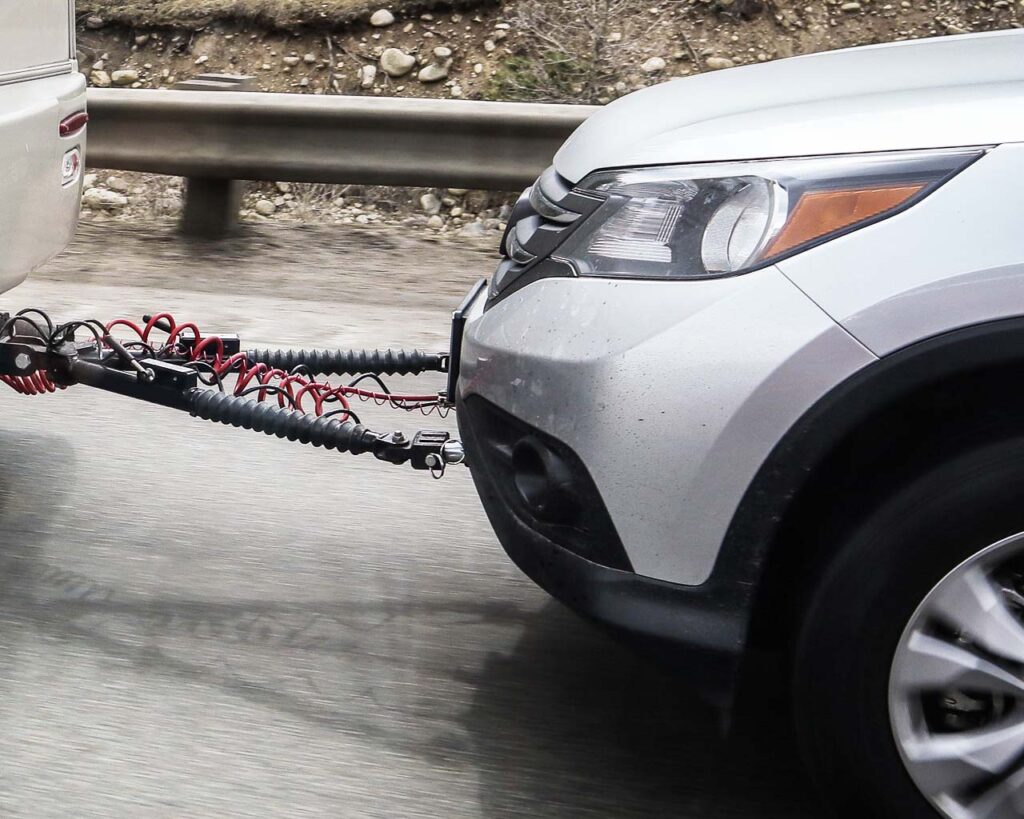
How to Tow a Car with Another Car Using Tow Bars
We've seen tow bars on the road. You may have seen large vehicles like RV's use them as well. However, these can be used in a variety of situations. These are used in flat tow applicaitions.
A tow bar is a thick steel bar that attaches to the underside of the frame of the vehicle doing the pulling. It typically ends in a ball mount or similar accessory that links to the coupler or trailer receiver??.
Towing a car with another car using tow bars involves a being familiar with all the steps and safety precautions so all goes well. We'll review all of these here, in detail.
Understanding Tow Bars
Tow bars offer a simple, cost-effective setup with minimal modifications to the vehicle. They are fast and convenient for hitching and unhitching vehicles??.
Tow bars can pull another vehicle, a trailer, or an RV. They are more often used recovery of inoperable vehicles and can also pull flatbed trailers, enclosed trailers for livestock, campers, or small mobile homes. So they are more for heavy duty applications.?.
Types of Tow Bars
There are different types, including self-aligning coach-mounted receivers, self-aligning towed vehicle-mounted receivers, and rigid A-frame tow bars. The self-aligning coach-mounted receiver is generally preferable due to its adjustability and ease of connection??.
Self-Aligning Coach-Mounted Receivers
These bars are attached to a motorhome and offer the advantage of self-alignment. This feature allows for easier connection as the receiver can adjust from side to side, accommodating a less-than-perfect approach between the vehicles. Coach-mounted receivers usually fold up on the back of the coach vehicle, which is convenient when the towed vehicle is used separately??.
Self-Aligning Towed Vehicle-Mounted Receivers
Similar to the coach-mounted version, these bars are attached to the towed vehicle. They also feature self-aligning arms, making it easier to connect the towed vehicle to the coach. The main difference is where the tow bar is stored when not in use – in this case, on the towed vehicle.
Rigid A-Frame Tow Bars
These are the simplest form of tow bars and consist of a rigid, A-shaped frame. They need precise alignment of the towing and towed vehicles for connection, as these tow bars do not have self-aligning features. A-frame tow bars are typically more economical but offer less convenience and flexibility compared to self-aligning models.
Steps for Towing Using Tow Bars
Park & Position
Park the towing vehicle on level ground. Align the vehicle that is going to be towed to the center possible. If you have a fixed-arm tow bar, make sure the front of the towed vehicle runs parallel to the tow vehicle's rear??.
Attach Tow Bar
For vehicle-mounted tow bars, fold down the coupler mount over your hitch's ball mount or pintle hook and lock it in place. Use a locking hitch pin for security. Follow the specific instructions for your tow bar and base plate's manufacturers??.
Attach Safety Cables
Crisscross safety cables from the RV to the towed vehicle below the tow bar, creating a safety basket. be sure cables don't drag on the ground and consider using quick links for easier attachment??.
Plug in Electrical Wiring
Connect the electrical cable from the tow vehicle's read rear to the towed vehicle, including the emergency breakaway cord. Follow specific instructions for your light system's wiring??. Some cars may require a wiring harness to tap into the brake lights and signals if not previously made to tow a car. If you cannot, make sure you put the hazards on along with the towed vehicle's parking lights.
Set Up Supplemental Braking System
Follow the manufacturer’s instructions for your specific braking system (if applicable). Test that the brakes on the towed vehicle engage when the towing vehicles brakes are pressed??.
Prepare for Flat Towing
Depending on your vehicle's year, make and model, check the owner's manual for the steps, which may include preparing the transmission, brakes, or steering??.
Lock-Out Tow Bar Arms
Release the parking brake of the towed vehicle. Drive the RV forward slowly until both arms of the tow bar latch. Slightly turning the RV can help engage the latches on both arms??.
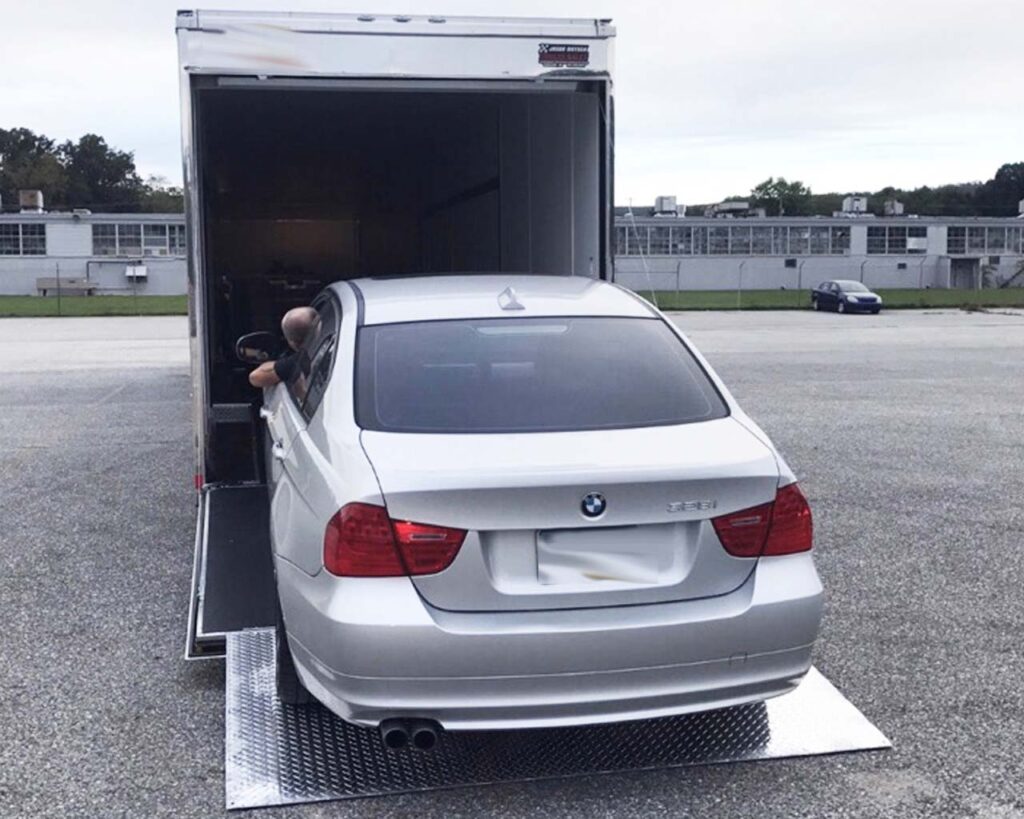
How to Tow a Car with a Trailer
By far, using a trailer is the safest way to tow a car with another car. Towing a car using a trailer however will need some preparation and special attention to safety.
Prepare for Towing with a Trailer
Check Towing Capacity
Make sure that your towing vehicle has enough capacity to handle the weight of the car and the trailer it is sitting on. It's important to know the tow rating of the tow vehicle before you go any further.
Choose the Right Trailer
Open Car Carrier
An open car carrier allows the car to be driven onto the trialer so all four wheels are off the road, suitable for cars that can’t be towed on a dolly or cannot roll very far. It is also great for longer distances.
Enclosed Car Carrier
Provides the best protection from weather and road debris, ideal for high-value or classic vehicles??. However, in many cases if the car is valuable, DIY towing a car may be riskier, regardless of the trailer. Decide accordingly!
Driving with a Trailer
Maintain Speed and Distance
Towing adds extra strain on brakes, requiring more time to slow down. Be extra careful while turning, as the extra weight can cause a trailer to fishtail??.
Navigating Turns and Reversing
Take wider turns so the trailer does not hit any curbs, light poles, etc. . Account for the extra length of the trailer when making turns. Use extra-long towing mirrors for better visibility. Avoid reversing if possible, as it can be difficult and may cause jackknifing??.

2WD vs. 4WD Flat Tow
You don't typically need a 4x4 for towing cars, unless you are pulling a car out of the mud or in snowy and icy roads.
You may be suprised to know that since 4x4's are heavier, they will have lower towing capacities. However, when pulling a heavy equipment or a heavy car trailer, it can make a difference when climbing on wet roads or dirt roads.
Tips and What to Consider
Tire Wear
Flat towing causes even tire wear but at a quicker rate than flatbed towing. It's advisable to disconnect or remove the drive shafts when flat towing, especially for frequent use, like with RVs??.
Insurance
Contact your insurance agent to verify proper coverage during towing??.
Practice Makes Perfect
We can't say it enough. Practice driving around in a safe place as much as possible before
Hire a Pro When Needed
If it's too much or you feel overwhelmed, stop where you are and call a pro. You can reach out for a local tow truck here at National Express.



